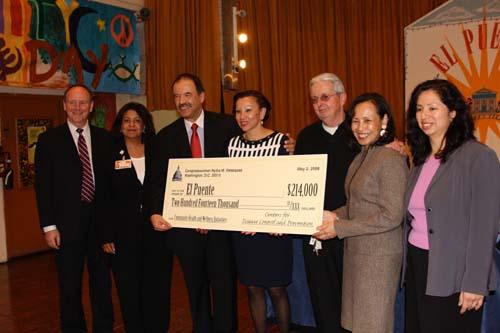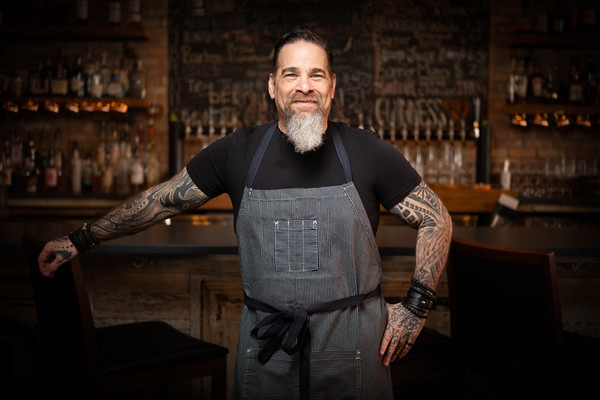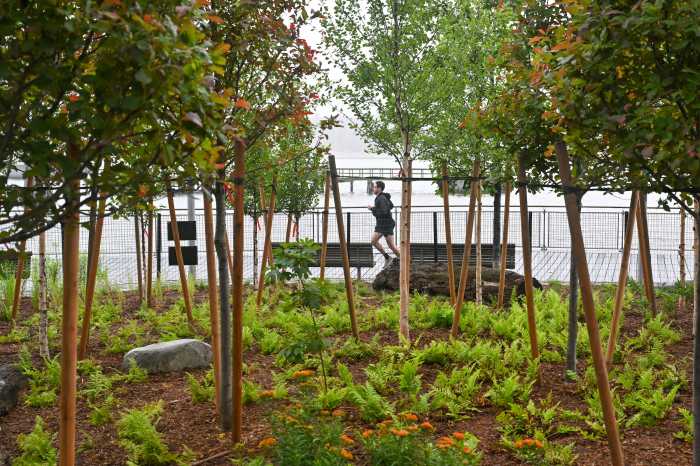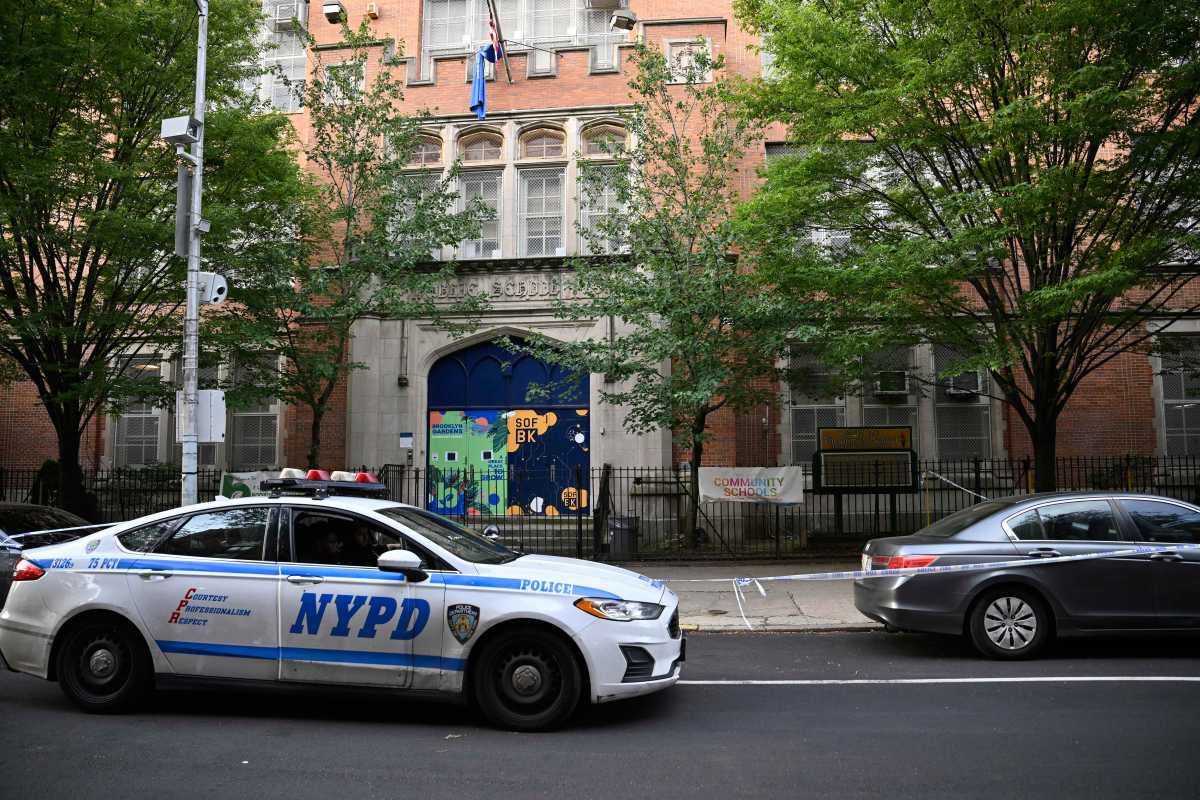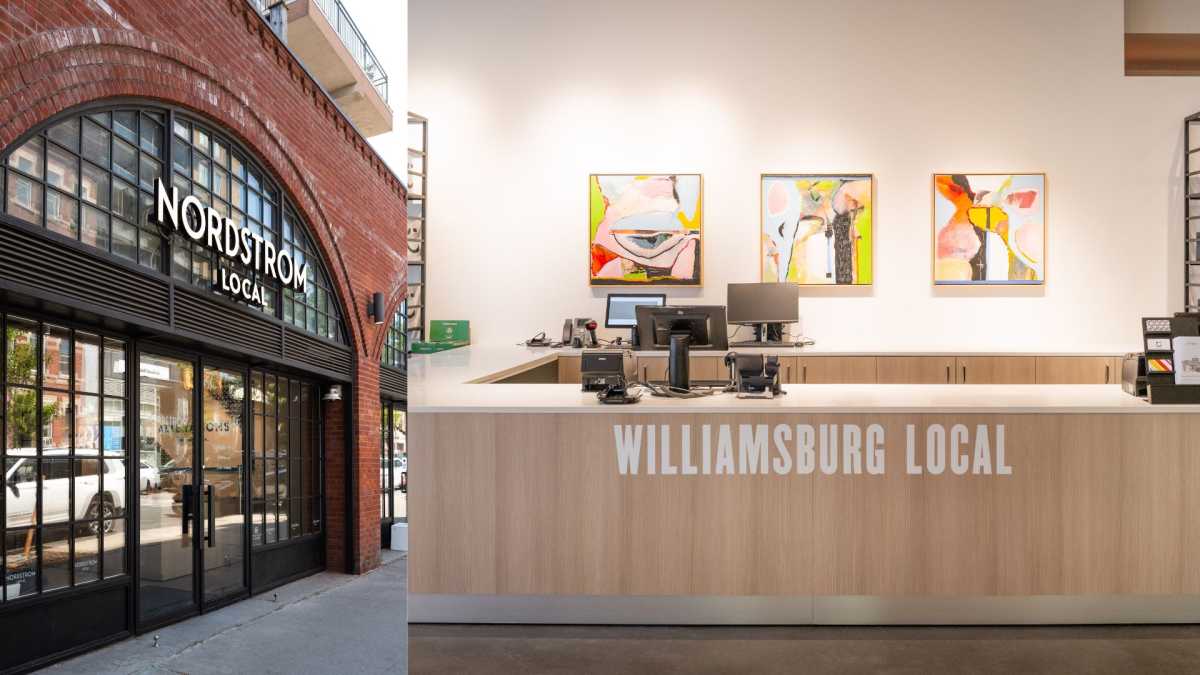El Puente, the renowned Williamsburg and Bushwick-based social justice organization, launched an anti-obesity and diabetes campaign last week, taking aim at diseases that disproportionately effect people of color.
The campaign kicked off with a press conference last Friday. Rep. Nydia Velazquez presented El Puente with a $214,000 check, a Congressional allocation made through the Center for Disease Control and Prevention.
“I am dedicated to targeting federal funds to programs that will make a difference in the community,” said Velazquez.
“With El Puente’s long-standing history of success, Brooklyn youth will undoubtedly benefit from this wellness program.”
The money will be used as “seed money” to formulate a plan for the campaign, which El Puente hopes to put into action next year.
“This will allow us to convene our partners to find a way to come up with answers about this epidemic nobody seems to have an answer to,” said Luis Garden Acosta, founder and president of El Puente.
“By the end of the year, we want to have a concrete, well-developed plan,” Garden Acosta said.
The plan will address how best to utilize El Puente’s medical partners, which include Woodhull Medical Center, Gouverneur Hospital, the NYC Health and Hospital Corporation, NYU School of Medicine and other Public Health Collaborators.
The money will also be used to develop a fundraising strategy.
Although El Puente hasn’t yet formulated a research plan, Garden Acosta said he plans to commission field surveys that take advantage of El Puente’s talent for hands-on interaction with the community.
“One of our ideas we have is engaging the [El Puente Academy] to have the students investigate and chart their eating and wellness habits,” Garden Acosta said.
This anti-obesity and diabetes campaign will not be El Puente’s first large-scale public health study.
Two years ago, the organization completed a four-year study looking into the area’s high asthma rates. Funded by a $1 million federal grant, the study’s findings were published in an article in the American Journal of Public Health. The study was hailed as a landmark community health study.
“We believe the community should be at the forefront of scientific research and drive the process, because it allows us to work with people directly,” Garden Acosta said.
“We want to know: How are your habits effected by what groceries are available at the Key Food, or the bodega on the corner? How are your habits affected by the lack of open space?”
A recent study published by the city’s Department of Health and Mental Hygiene showed that obesity and diabetes rates each jumped 17 percent between 2002 and 2004.
Although the city’s obesity rate of 23 percent is still below the national average of 32 percent, the city’s diabetes rate of 9.5 percent surpasses the national average of 7 percent.
For Latino New Yorkers, that figure is particularly high: 13.5 percent of Latino New Yorkers have diabetes.
A health report published last September by the SUNY Downstate Medical Center painted a grim portrait of health care people in Williamsburg and Bushwick receive.
The study examined general health and access to health care in eleven regions throughout Brooklyn, and showed Williamsburg/Bushwick to be the worst or among the worst in many categories.
Twenty-five percent of Williamsburg/Bushwick respondents reported that they did not see a doctor when they needed to during the past year because of the high cost. This number represents the highest figure in the Brooklyn, in which 16 percent of respondents reported the same sad choice.
Similarly, 20 percent of Williamsburg/Bushwick respondents said they had not filled a prescription in the past year because of the cost, the highest figure in the borough, compared to 15 percent Brooklyn-wide.
Worse yet, 25 percent of Williamsburg/Bushwick residents don’t even have a personal doctor or health care provider, 5 percent worse than the borough-wide figure.
This alienation from proper medical care has compelled 13 percent of Williamsburg/Bushwick residents to resort to the emergency room when sick or in need of medical advice, nearly double the borough-wide figure of 7 percent.


